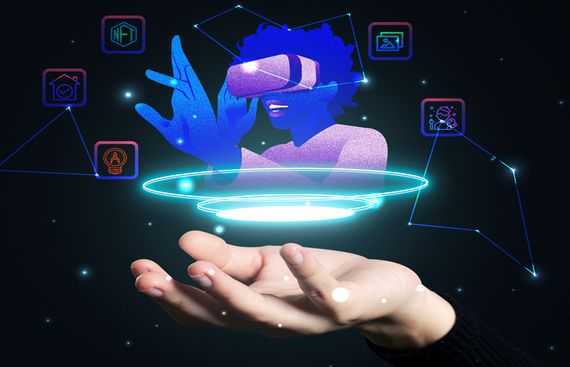Exploring the Potential of Virtual & Real World Blend Via Metaverse

The wall between the real and virtual world seems to be thinning over time. In recent times, the revolution in technology is paving the way for us to venture into the once fantasy world through Metaverse. The budding technological trend is attracting several tech giants to embrace Metaverse. Most recently, Facebook made a shift to Metaverse and even renamed it 'Meta'. Facebook CEO Zuckerberg believes that Metaverse could takeover mobile internet, enabling people to do much more than the internet permits presently.
Notably, Metaverse could facilitate users to hang out and even dance with their friends with a real-time feel using the apps, phones, mixed reality gadgets, and PCs which otherwise could be virtual presently. In his words, Zuckerberg says, "I wanted to discuss this now so that you can see the future we're working toward and how our major initiatives across the company are going to map that."
Likewise, Microsoft CEO Satya Nadella has mentioned the potential of developing an 'enterprise metaverse' through the software maker's cloud computing services.
The tech giant's keen interest in mixed reality is indeed easing the process of Metaverse reaching the daily access tech products. The blend of virtual reality and augmented reality would introduce digital features in the real, and also, it would intermingle the internet with the virtual world.
![]()
Several brands have embraced Metaverse, intending to develop increasingly personalized and essential customer experiences; this would aid organizations by being merely digital-first to shifting truly virtual-first. The shift would further represent an incredible opportunity for brands to renovate themselves uniquely. Here is a few key points hint at the potential of the virtual and real world blend.
Investing in Tech: Tech giants intend to utilize their platforms and invest in Extended Reality (xR) technology to set up real-time, immersive video content that could execute metaverse experiences. Augmented reality (AR) facilitates digital graphics, props, or characters to be involved in the real world from the camera's viewpoints. Mixed reality (MR) combines AR in the foreground with LED backdrops or video content in the background puts people inside digital worlds. Also, designing figuring out virtual experiences demands exceptional creativity combined with engineering and development capabilities.
Metaverse for Customer Engagement:
This tech would help the customers to engage in the brand by the activities or tasks and aid them to integrate self-service capabilities into the virtual experience to solve customer problems. What kind of real-time feedback could they provide about virtual experiences? What kind of direct assistance would be required? What would affect the duration of their stay or so? Acknowledge releasing a digital version of a new product or experience, producing an immersive game in a virtual space, or drawing customers into a digital world.
Needed Integration to Deliver a Metaverse Experience. Data-sharing would happen concurrently beyond multiple users, so data usage and security will be significant to address. Simultaneously with the interconnectedness that drives compelling virtual experiences, the Metaverse is also expected to raise the threats to personal safety and market competition and the ability to broadcast misinformation.
Metrics to continuously check and enhance CX in the Metaverse. CSAT alone won't cut it. Preferably, a Customer Effort Score (CES) might be more helpful. CES is a solo metric that targets to calculate friction or the efforts put in by a customer must exert to get an concern fixed, a product purchased or returned, or a question answered. Furthermore, brands would also have to rethink the Net Promoter Score to determine how and to what extent a specific NPS based on a metaverse experience will translate (positively or negatively) to the NPS through other brand channels including the real world.
![]()
Building virtual experiences that highlight vicarious customer experiences, braced by human-centred AI. Also, the computer-generated avatars has to reciprocate the look and feel of a human. The digital interaction has to be natural. Doing so increases the amount of time consumers spend communicating with them online. Alongside, it also perilous that brands conduct themselves in an authentic, trustworthy manner in metaverse environments. Else it would affect the business goodwill also identify a online customer service representative as such or by pre-recorded answers in animated characters are certain measures to lose customer trust.
With the advancement, we could get ready to explore and experiment as the Metaverse evolves toward its vision. While ROI on metaverse initiatives may be a way off, now is the time to fine-tune your marketing playbook for the virtual world.
The Metaverse offers brands the possibility to build more profound, trusted, and meaningful relationships with customers by creating virtual experiences that combine entertainment, personalization, and value. A Metaverse would leverage AI, AR, MR, and a host of other technologies to develop a virtual world for consumers that would become a part of their life.
